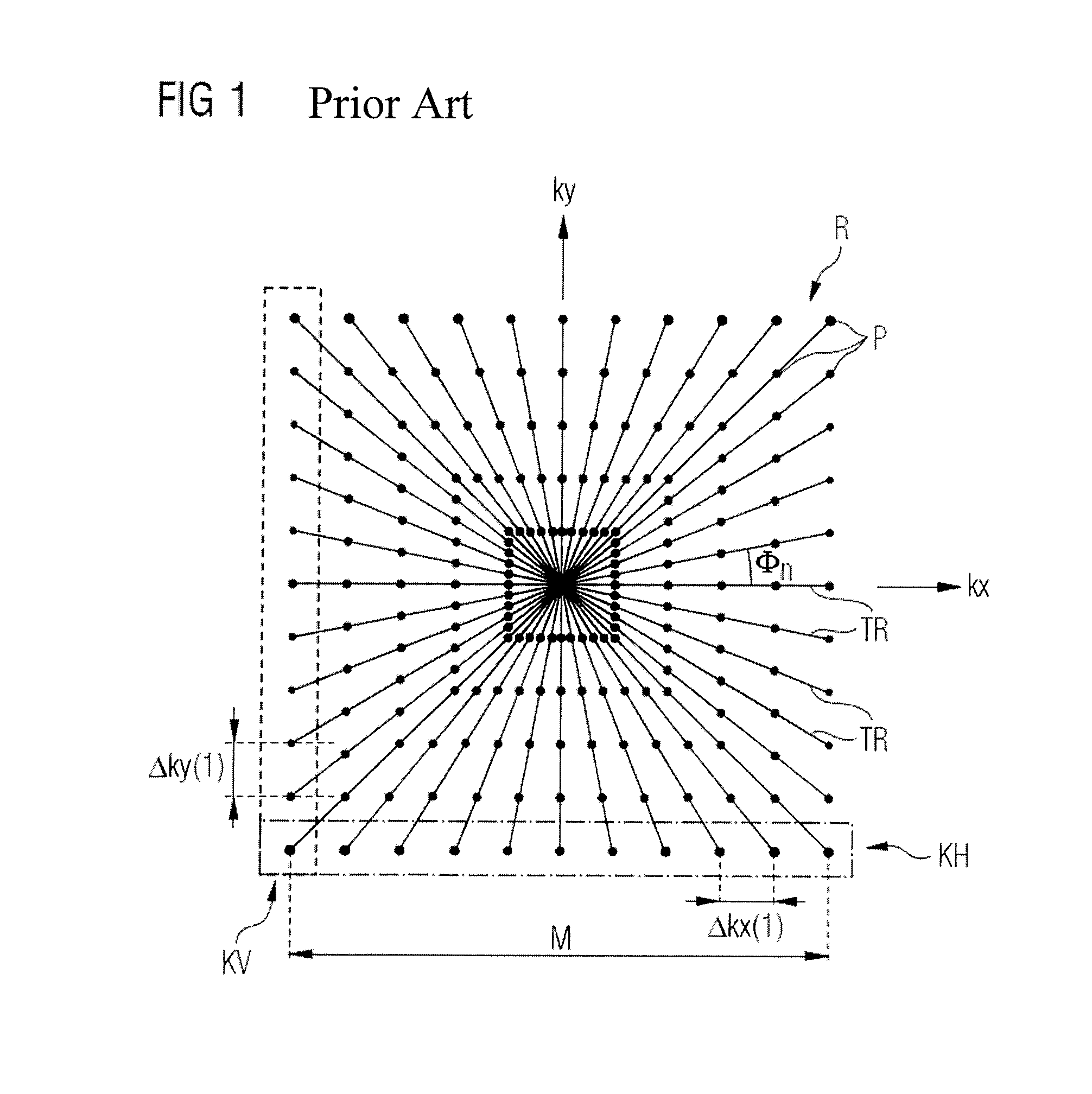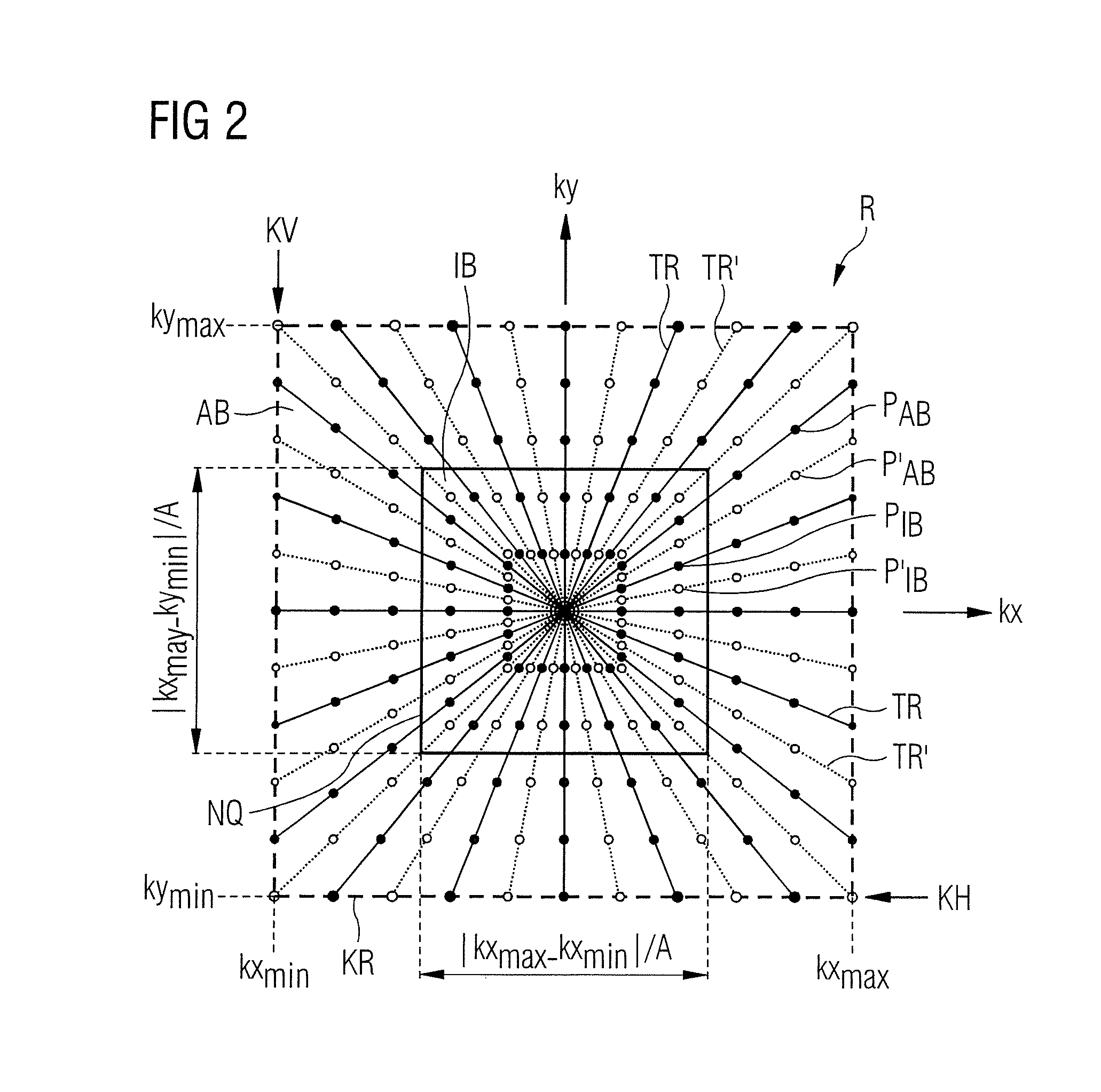Method, reconstruction device, and magnetic resonance apparatus for reconstructing magnetic resonance raw data
a reconstruction device and raw data technology, applied in the field of reconstruction devices and magnetic resonance apparatuses for reconstructing raw data, can solve the problems of compromising resolution, contrast and artifact susceptibility, and generally requiring low spatial resolution of coil calibration data, and the required data volume for reconstructing an artifact-free image is higher by at least a factor /2
- Summary
- Abstract
- Description
- Claims
- Application Information
AI Technical Summary
Benefits of technology
Problems solved by technology
Method used
Image
Examples
Embodiment Construction
[0043]In accordance with the previous explanations, a preferred embodiment of the invention, measured data in the form of undersampled linogram trajectory are acquired with the use of multiple receiving coils. “Undersampled” means that, based on a completely scanned linogram trajectory with M sample points per edge, only every A-th spoke is acquired with an acceleration factor A. Then, GRAPPA reconstruction is required to interpolate the non-acquired raw data at the missing sample points (subsequently also called “data points”) from the acquired raw data at the other sample points and to substitute these in the data matrix. For this purpose, k-space is first divided into two regions, an internal (central) region and an external (peripheral) region, by a concentric square (the center of which corresponds with the center of the k-space) with an edge length M / A. This square forming the boundary of the regions is subsequently called a “Nyquist square”. According to the Nyquist theorem, ...
PUM
 Login to View More
Login to View More Abstract
Description
Claims
Application Information
 Login to View More
Login to View More - R&D
- Intellectual Property
- Life Sciences
- Materials
- Tech Scout
- Unparalleled Data Quality
- Higher Quality Content
- 60% Fewer Hallucinations
Browse by: Latest US Patents, China's latest patents, Technical Efficacy Thesaurus, Application Domain, Technology Topic, Popular Technical Reports.
© 2025 PatSnap. All rights reserved.Legal|Privacy policy|Modern Slavery Act Transparency Statement|Sitemap|About US| Contact US: help@patsnap.com



